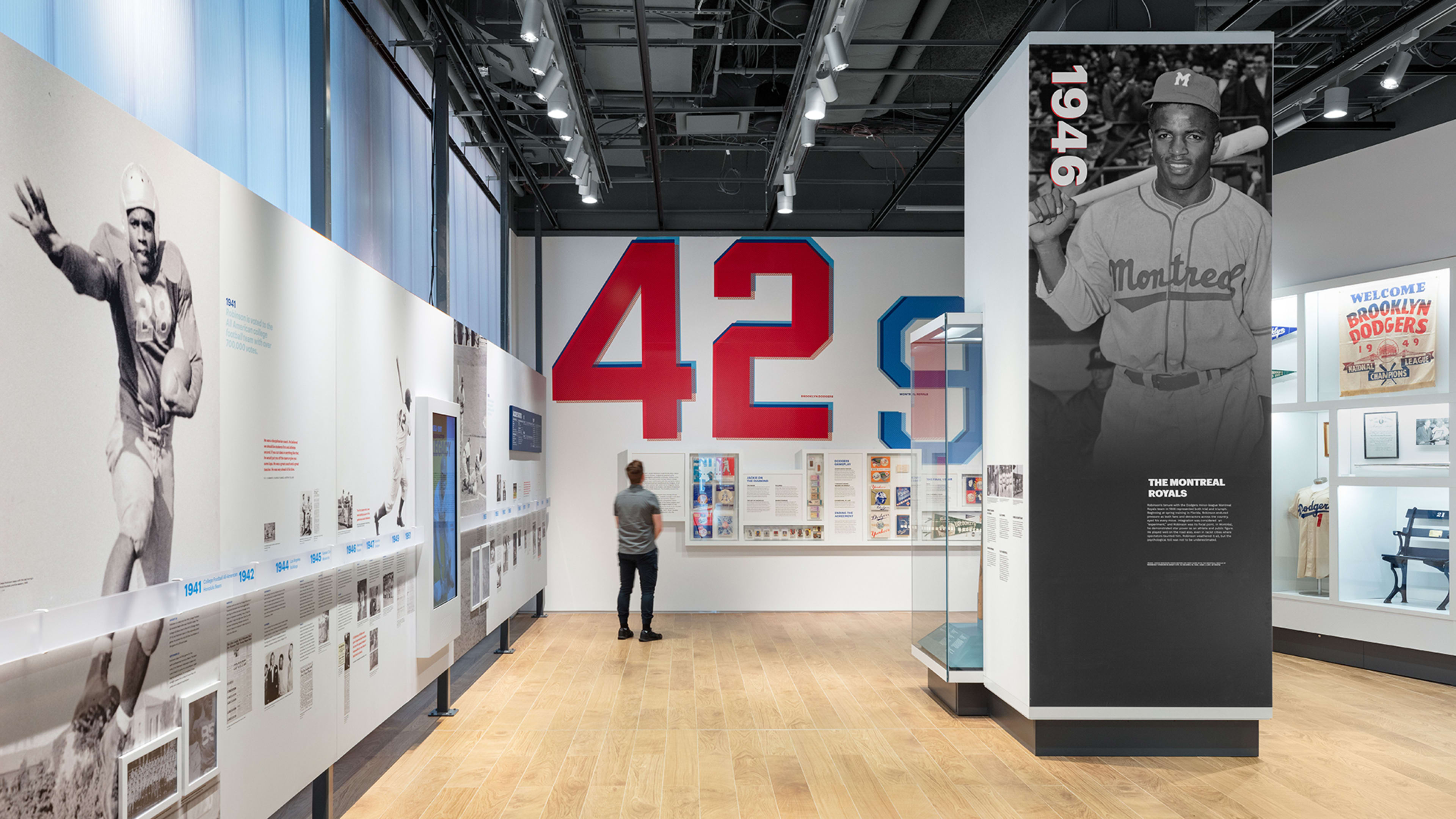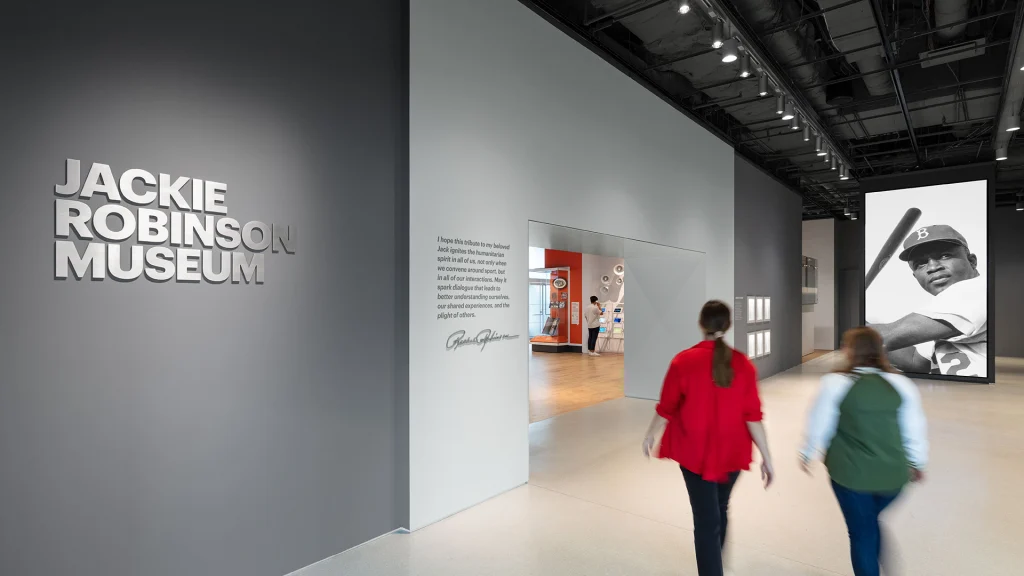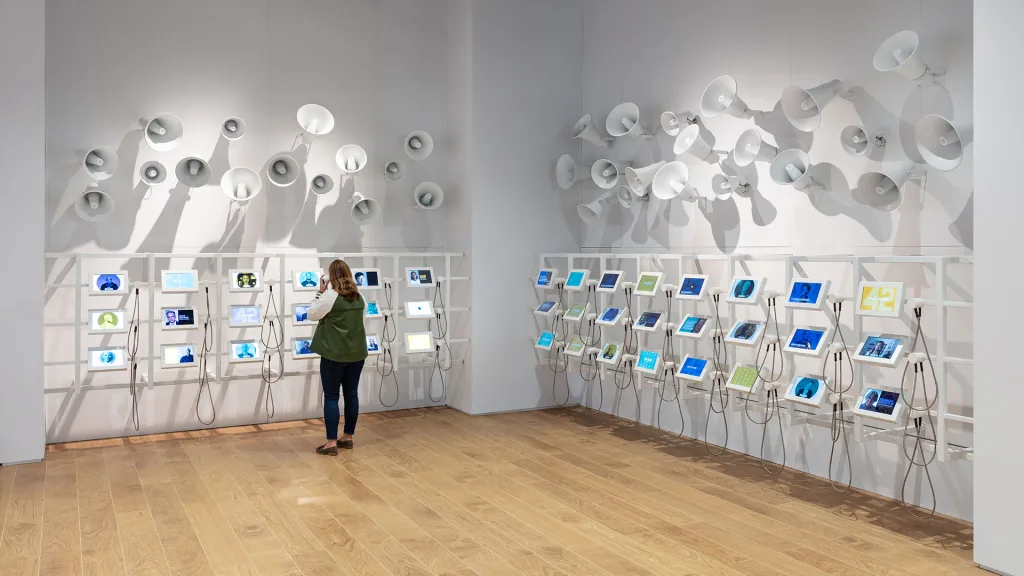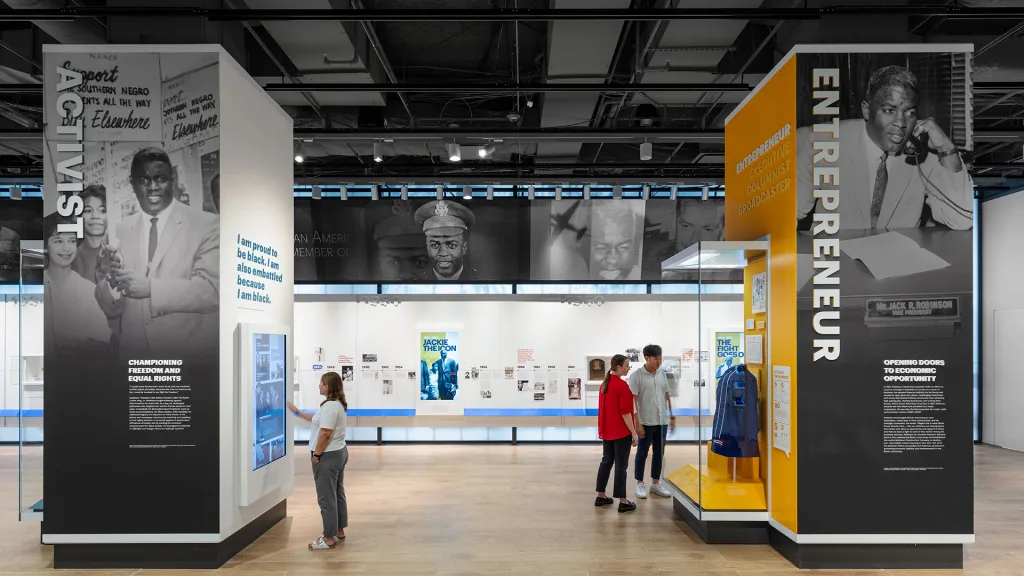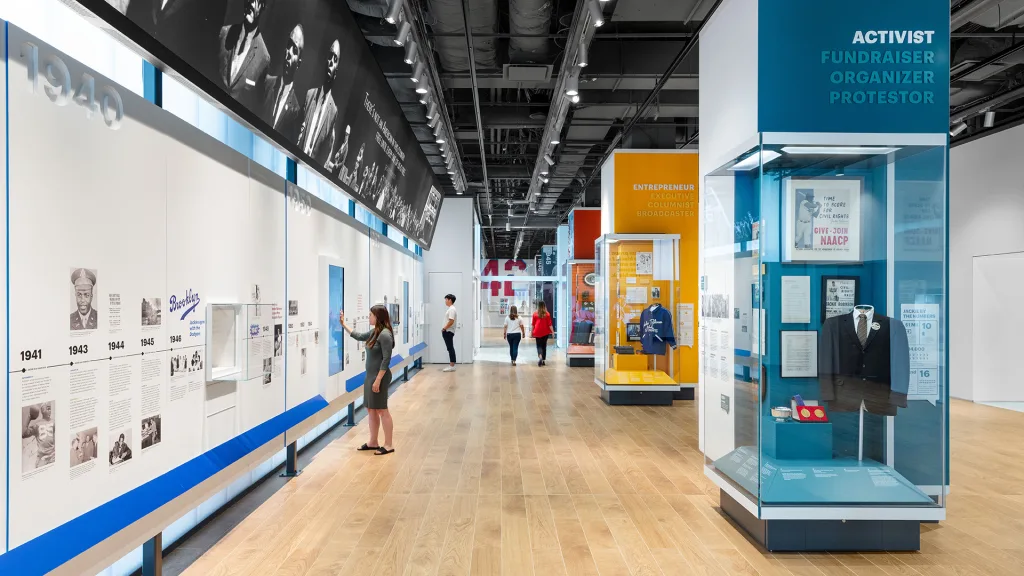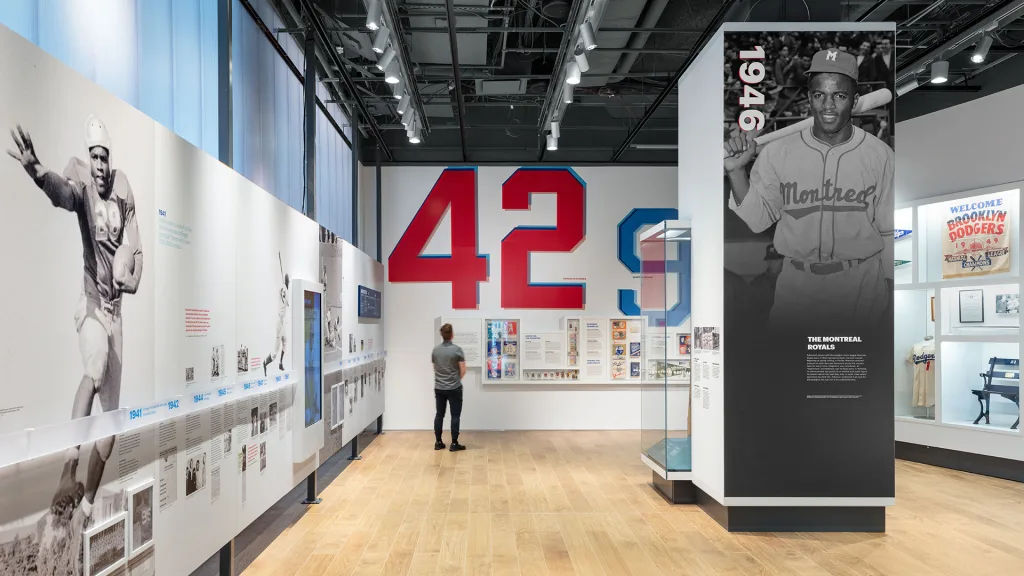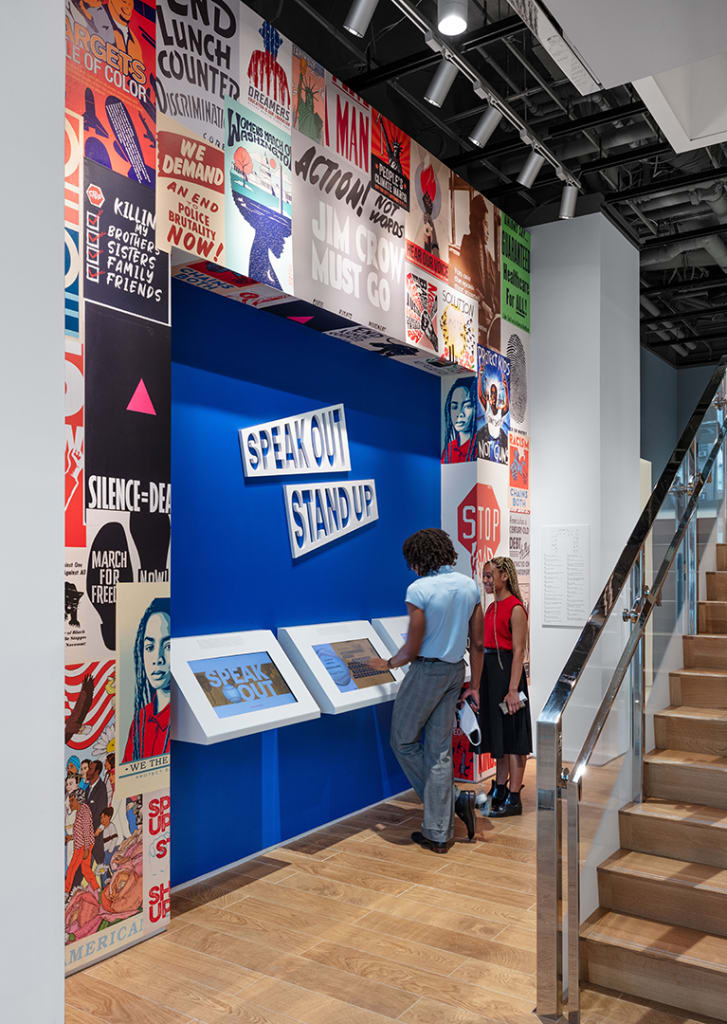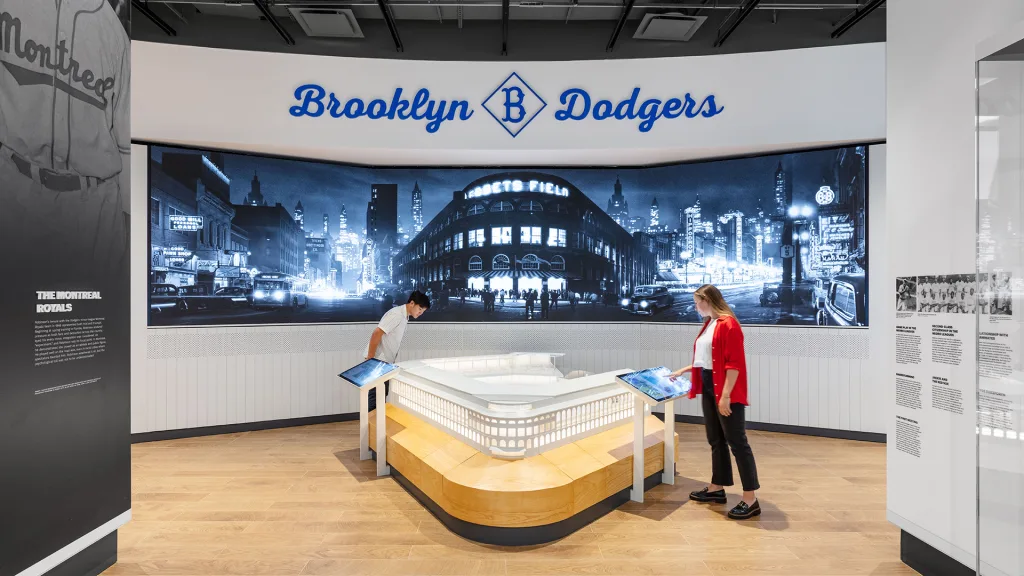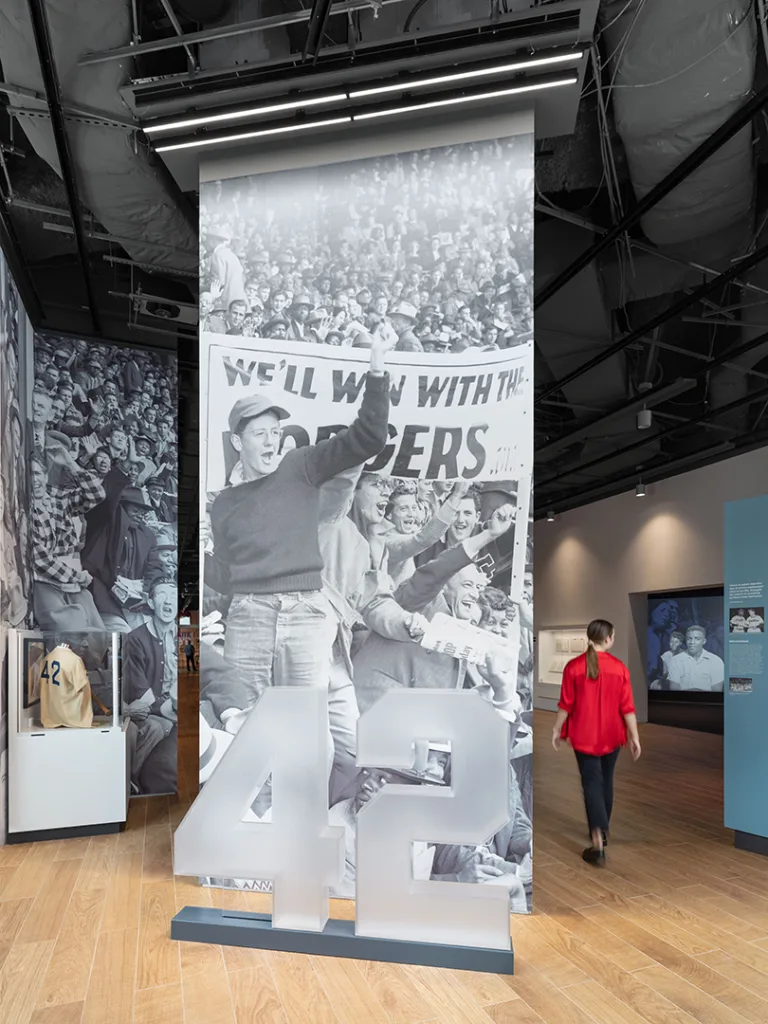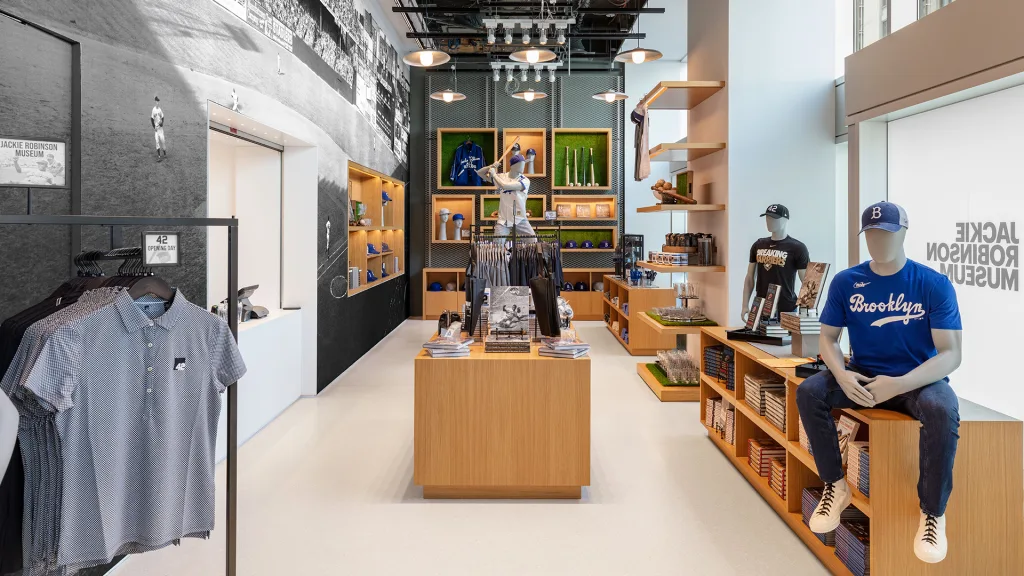The one-sentence story of Jackie Robinson’s life is well known. As a baseball player in 1947, he was the first Black person to play in Major League Baseball, ushering in a transformation of America’s national pastime and arguably accelerating the civil rights movement. This one sentence bio is a big one; few sports figures have played such a major role in history.
But Robinson was more than one achievement, as significant as it was. A new museum dedicated to his life on and off the field aims to tell a more complete story of a figure who excelled in business, in the media, and in activism, in addition to his athletic achievements. The museum’s creators and designers want visitors to learn this broader story while also building on the social progress Robinson made during his life.
The Jackie Robinson Museum, now open in Lower Manhattan, not all that far from where Robinson played for the Brooklyn Dodgers, is the realization of a lifelong dream of Robinson’s 100-year-old widow, Rachel, who was there for the museum’s recent ribbon cutting. “She wanted his full story to be told,” says Della Britton, president and CEO of the Jackie Robinson Foundation, established in 1973, which his wife had created in his honor after his early death in 1972 at age 53.
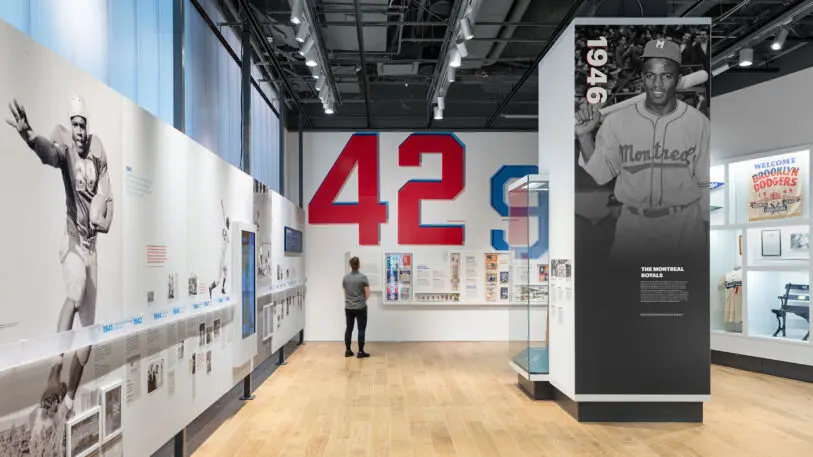
That required de-emphasizing the famous one-line story from the start. The main gallery in the museum has little to do with Robinson the player or Robinson the color-barrier breaker. Sections in the main gallery explore Robinson’s work and life outside of sports, including his military service; his role in 1957 as the first Black vice president of a major corporation, the coffee brand Chock Full o’ Nuts; his civil rights activism in the late 1950s, and his time as a sports broadcaster in the 1960s.
Robinson’s athletic history isn’t ignored. One large gallery focuses on his extensive sporting career: from lettering in four sports at UCLA to being, reportedly, the first person to dunk a basketball to his professional barrier-breaking baseball career. In 1997, Major League Baseball took the rare step of retiring Robinson’s jersey number, 42, across the entire league.
“A big part of the creative challenge we set for ourselves collectively,” says Neubert, “was, on one hand, celebrating his legacy and, on the other hand, making his legacy mean something for the future and that calls people to action to take that legacy forward.”
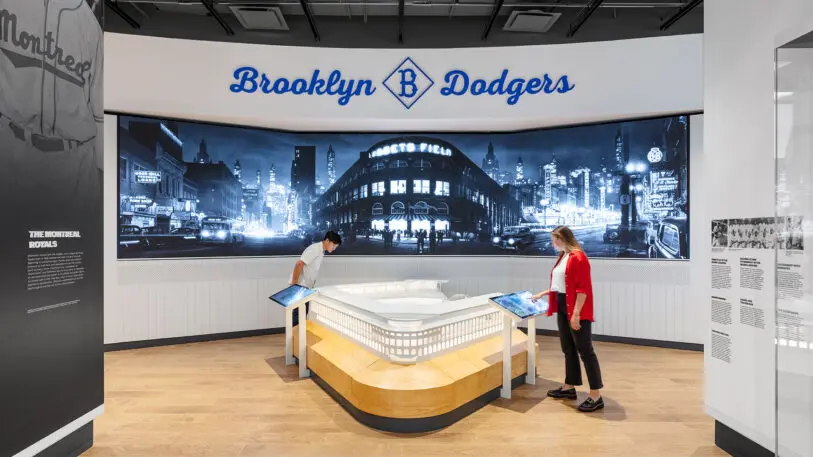
Neubert says Game Day is part of the museum’s focus on putting Robinson’s life in a greater context, showing how world events shaped his activism, professional life, and sporting career.
The museum also features a section showing Robinson’s influence on the world, with 42 video screens featuring prominent figures from the worlds of politics, sports, and business, including baseball player Sandy Koufax, former attorney general Eric Holder and filmmaker Ken Burns,, talking about the role Robinson played in guiding or inspiring their own work.
“This museum isn’t just about him, it isn’t just about race,” Neubert says. “It’s about citizenship and humanity.”
Recognize your company's culture of innovation by applying to this year's Best Workplaces for Innovators Awards before the extended deadline, April 12.
